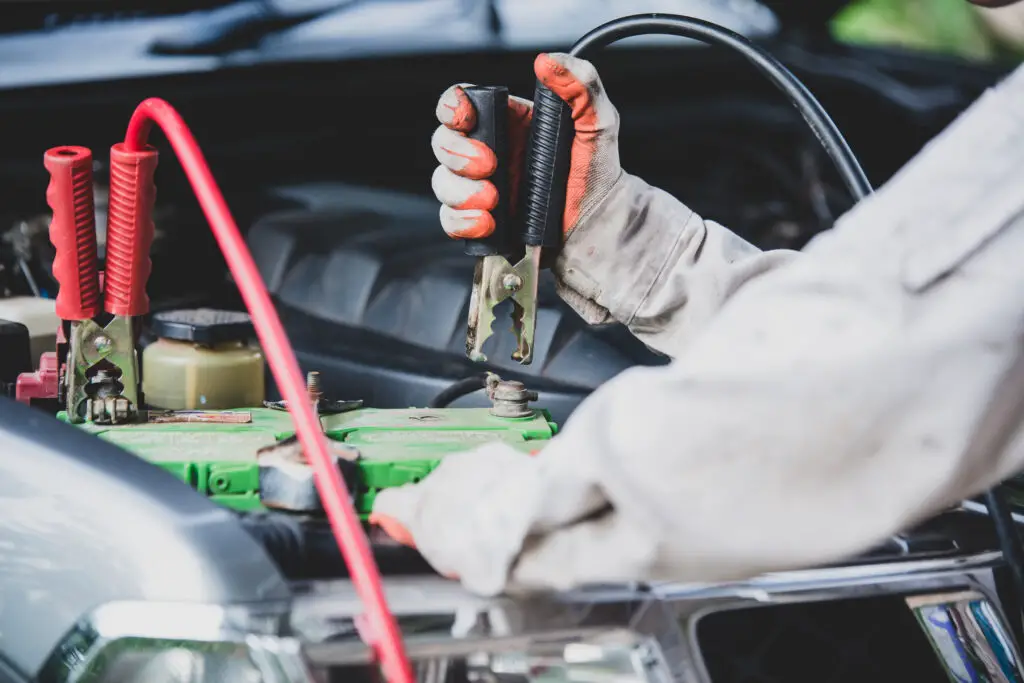Are you wondering how long it takes to jump a car battery? Jump-starting a car battery is one of those skills that every driver should know but hope they never have to use. It’s an essential part of car ownership, especially when you’re faced with the dreaded click-click of a dead battery.
But once you’ve connected those jumper cables, how long does it actually take to jump-start a car battery? The answer depends on a few factors, including the condition of your battery,
the power of the donor vehicle, and the efficiency of your connections. Let’s break it down and get you back on the road as quickly as possible.
Understanding the Process
Before diving into the timeline, it’s essential to understand what’s happening when you jump-start a car. A jump start involves using a second vehicle or a portable jump starter to provide the dead battery with enough power to start the car.
The working vehicle’s battery transfers energy to the dead battery through jumper cables, allowing the dead battery to gain enough charge to start the engine.
The Setup: Getting Ready
1. Preparation Time: 5-10 minutes
The time it takes to set up for a jump start can vary depending on how familiar you are with the process. If you’re new to it, expect to spend about 10 minutes ensuring everything is in place. Here’s what you need to do:
- Position the Vehicles: Place the two cars close enough for the jumper cables to reach both batteries but ensure they’re not touching.
- Turn Off Both Vehicles: This is crucial to prevent electrical damage.
- Locate the Batteries: Some cars have their batteries under the hood, while others may have them in the trunk.
- Check the Jumper Cables: Ensure the cables are in good condition, with no fraying or exposed wires.
- Connect the Cables Correctly: Attach the red (positive) clamp to the positive terminal of the dead battery first, then the positive terminal of the good battery. Attach the black (negative) clamp to the negative terminal of the good battery, then attach the other black clamp to an unpainted metal surface on the dead car’s engine block.
Charging Time: How Long to Leave the Cables Connected
2. Charging Time: 2-5 minutes
Once the cables are connected, it’s time to let the good battery charge the dead one. This is where the real waiting game begins. The amount of time it takes to jump-start the car can vary based on several factors:
- Battery Condition: If the dead battery is simply drained, it may take as little as 2-3 minutes to charge enough to start the car. However, if the battery is old or significantly depleted, it may take closer to 5 minutes or more.
- Temperature: Cold weather can make batteries less efficient, so if you’re jumping a car in freezing conditions, it may take longer.
- Engine Size: Larger engines require more power to start, so a compact car may jump faster than an SUV or truck.
After a few minutes, try starting the car with the dead battery. If it starts right away, great! If not, give it another few minutes and try again. In some cases, it may take up to 10 minutes to generate enough charge.
Post-Jump: Disconnecting and Running the Car
3. Post-Jump Time: 15-30 minutes
After your car starts, you’re not out of the woods yet. You’ll need to follow these steps:

- Disconnect the Cables: Start with the negative clamp on the car that was jump-started, then the negative on the donor car. Follow with the positive clamps in the same order. Be careful not to let the clamps touch each other or any metal surfaces during this process.
- Let the Car Run: To prevent the battery from dying again, let the car run for at least 15-30 minutes to allow the alternator to charge the battery fully. If possible, take the car for a drive instead of letting it idle. Driving helps charge the battery more effectively.
What If It Doesn’t Work?
Sometimes, despite your best efforts, the car won’t start. If the car doesn’t start after 5-10 minutes of charging, the battery may be beyond saving, or there could be another issue at play, such as a problem with the starter or alternator. In this case, you may need to call for roadside assistance or get the battery replaced.
Preventative Measures
Jump-starting a car can be a hassle, so it’s worth taking some steps to prevent the situation in the first place:
- Regularly Check Your Battery: Test your battery’s charge level every few months, especially before long trips or in cold weather.
- Clean the Battery Terminals: Corrosion on the terminals can prevent proper electrical contact. Clean them regularly to maintain a good connection.
- Replace Old Batteries: Car batteries typically last 3-5 years. If your battery is older than that, consider replacing it before it leaves you stranded.
- Turn Off Electronics: Ensure all lights, radio, and other electronics are turned off when the car is not running. Leaving these on can drain the battery faster than you might expect.
Final Thoughts
In summary, the total time to jump-start a car battery can range from 20 minutes to nearly an hour, depending on how long it takes to set up, charge, and ensure the battery is functioning correctly. Here’s a quick recap:
- Preparation: 5-10 minutes
- Charging: 2-5 minutes (can be longer depending on battery condition)
- Running the Car: 15-30 minutes
By understanding the process and being prepared, you can minimize the time and stress involved in jump-starting a car. Keep a set of jumper cables in your trunk, know the basics of how to use them, and you’ll be ready to tackle this common roadside challenge whenever it arises.
Discover more from Chikwem
Subscribe to get the latest posts sent to your email.